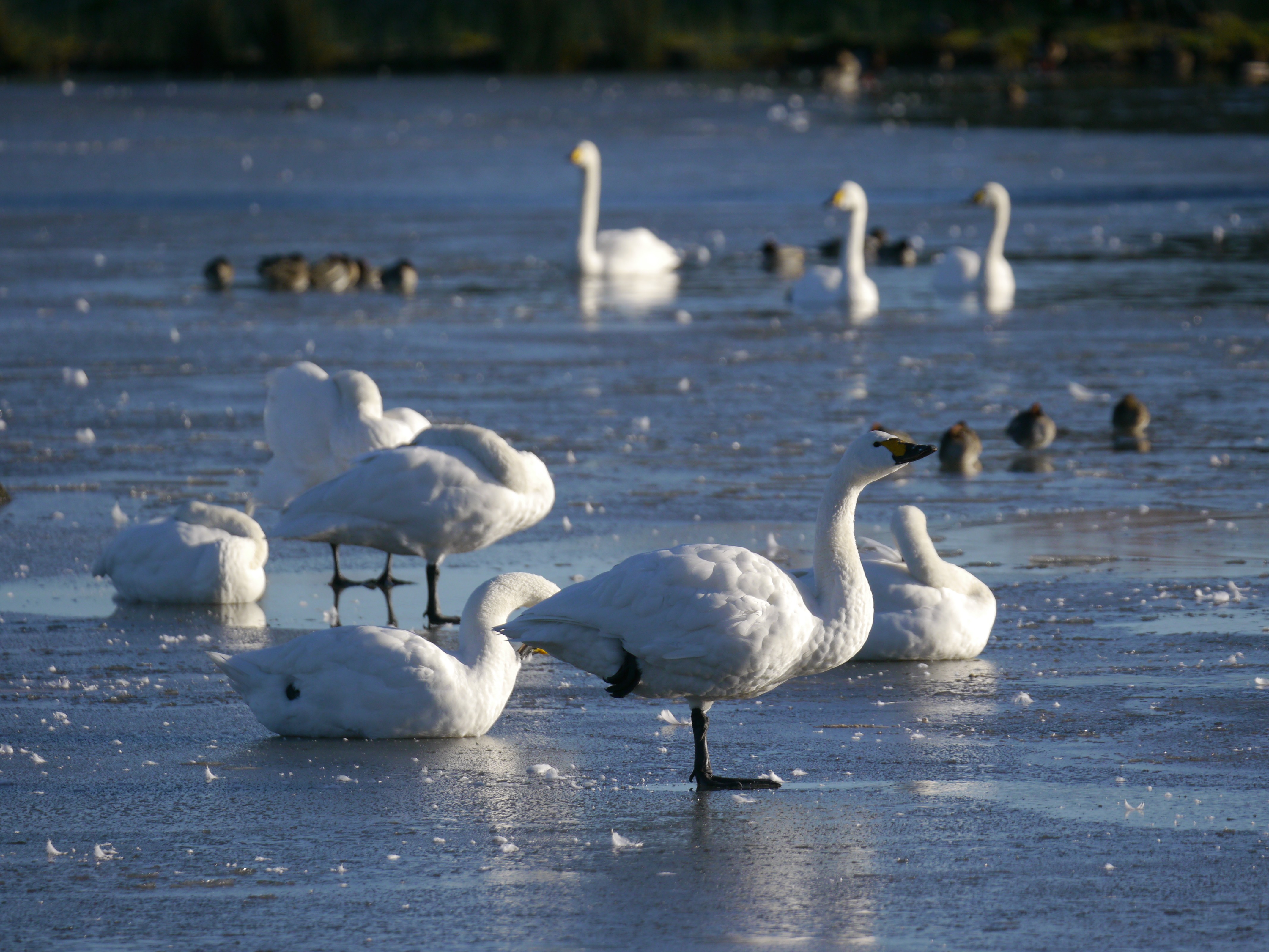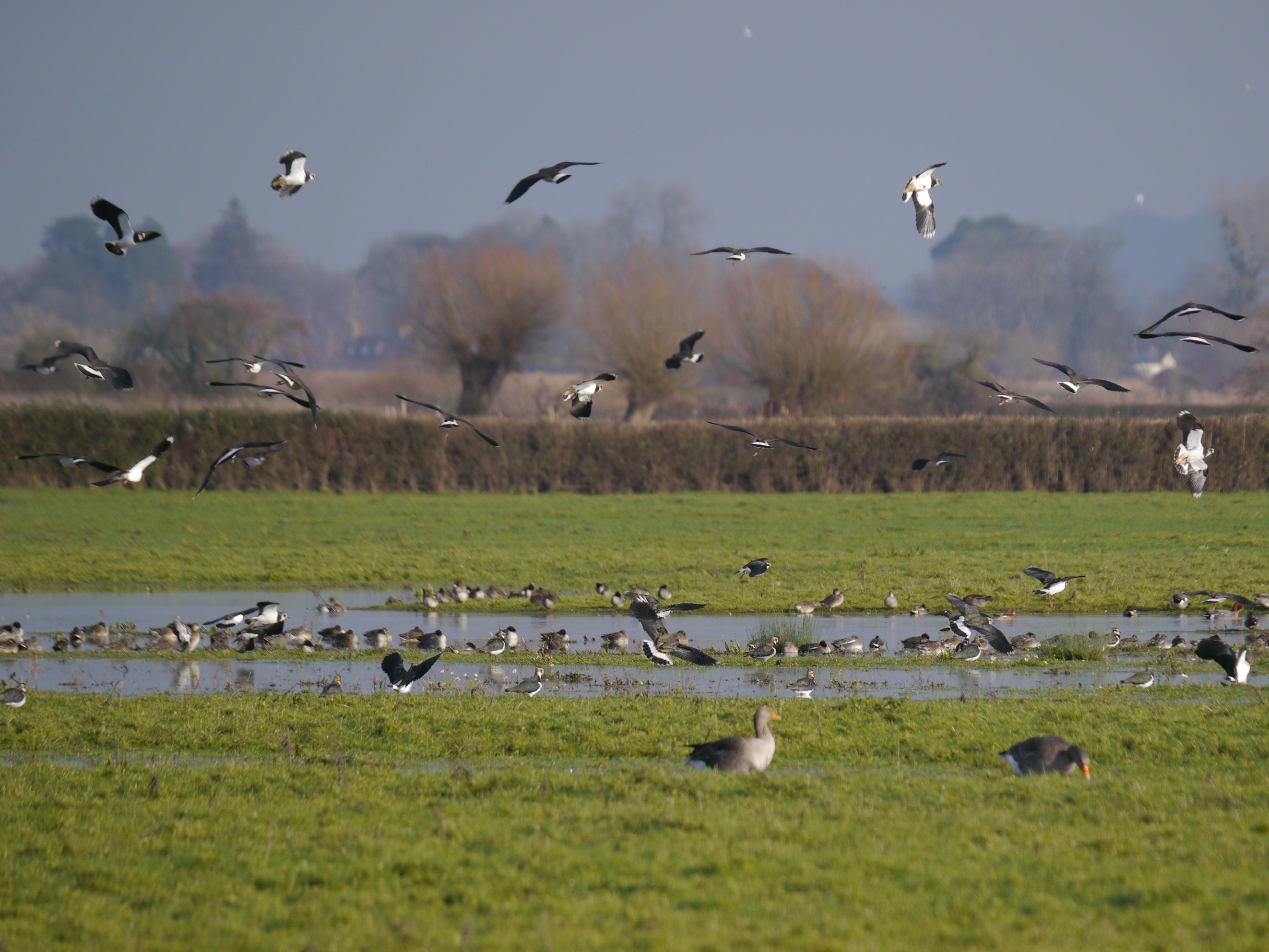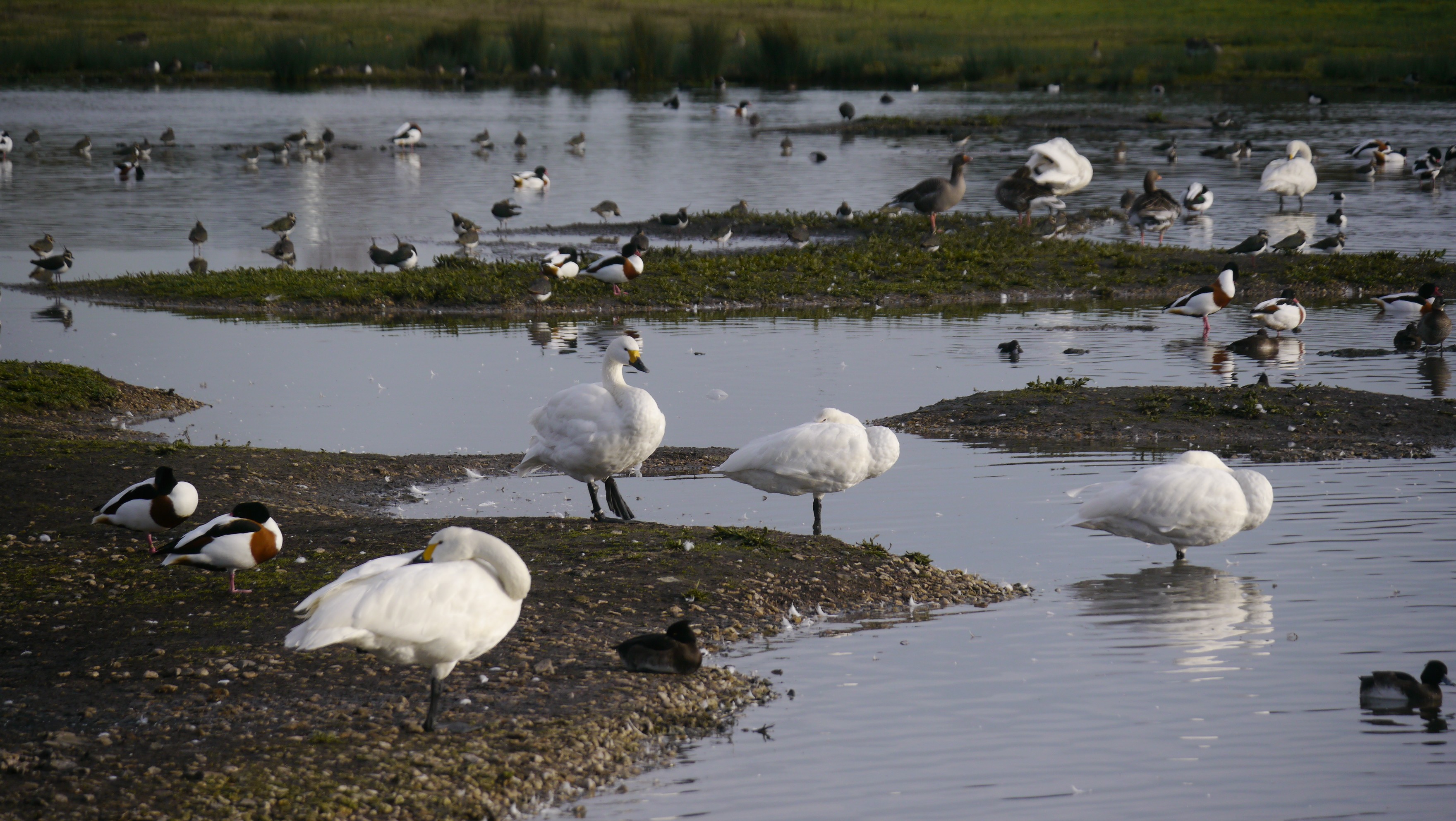More signs of spring
It's really is starting to feel like spring is upon us, although we've a cold snap to come
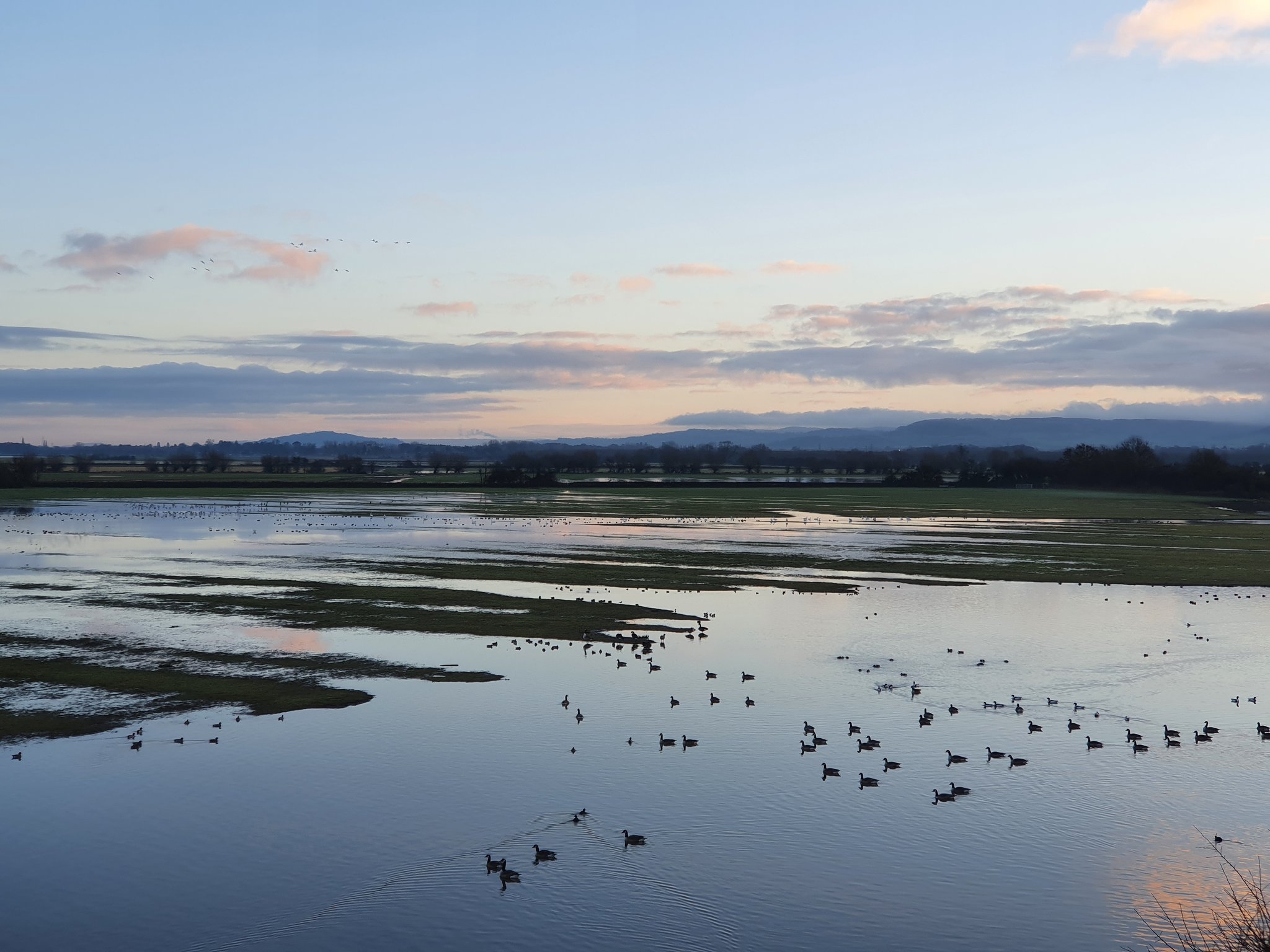
It really is starting to feel like spring is upon us, although we've a cold snap to come with easterly winds bringing cold temperatures and the threat of snow.
Despite this we're seeing new arrivals on the reserve ahead of the breeding season, and a change of behaviour in our winter birds are they get ready to leave us. This week also saw World Wetland Day (2nd February). Check out more of the celebration across WWT for World Wetland Day on Twitter here.
The Reserve Team are hoping that spring doesn't come too soon as we still have some of our winter work to complete. On Tuesday we celebrated World Wetland Day and set about restoring one of the South Finger's original dragonfly ponds. Over the years the bramble and willow scrub had encroached and covered 3/4 of the area. The team worked hard and pushed back the vegetation to open the area back up. Once spring does fully arrive we'll keep an eye on the pond for amphibians and then dragonflies and damselflies this summer. Once we reopen you'll be able to follow the progress of the pond as it can be seen from the viewing screen at the South Finger Reedbed. Check out the before and after photos from our Reserve Placement Student, Beth, below.
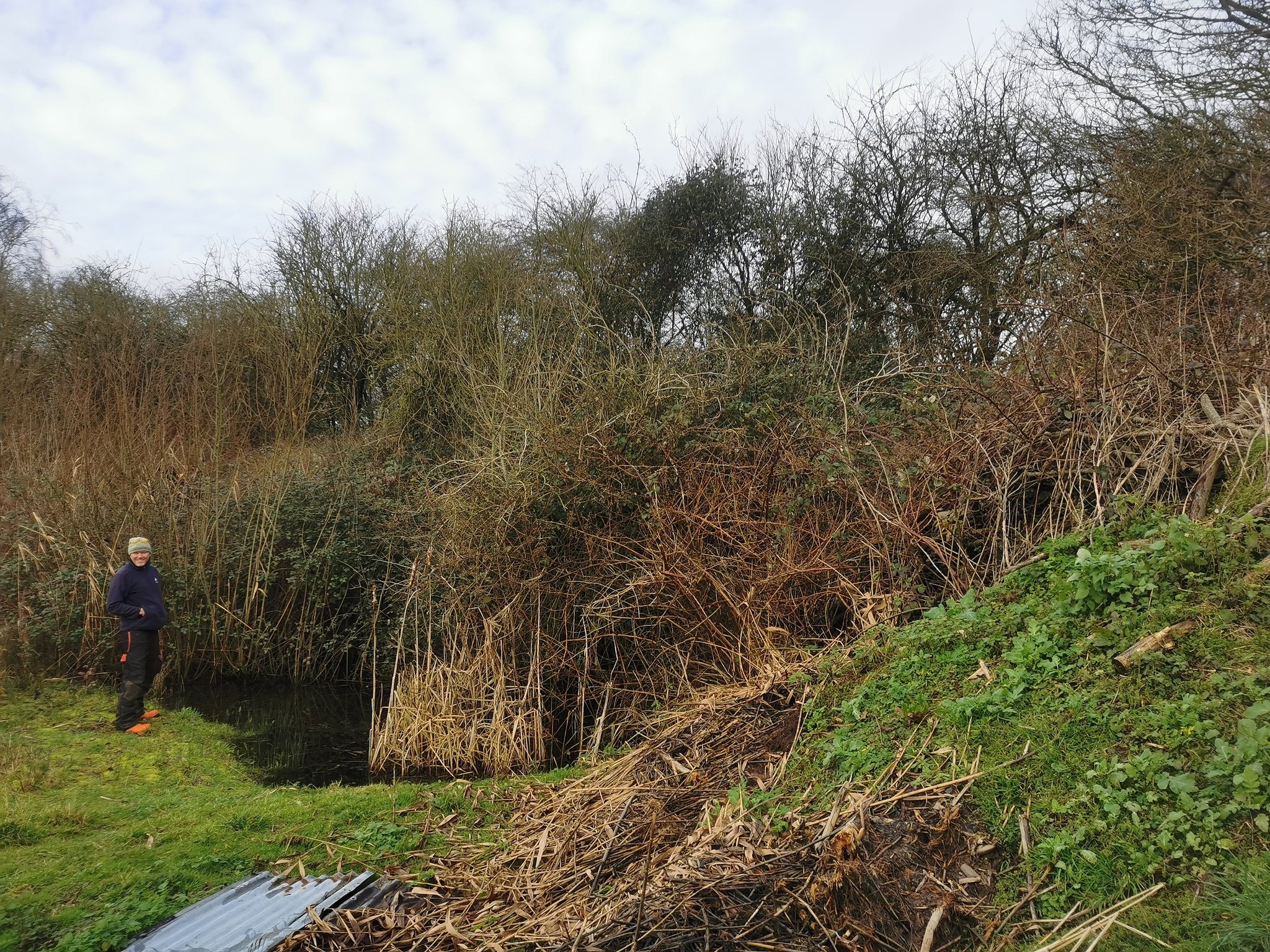
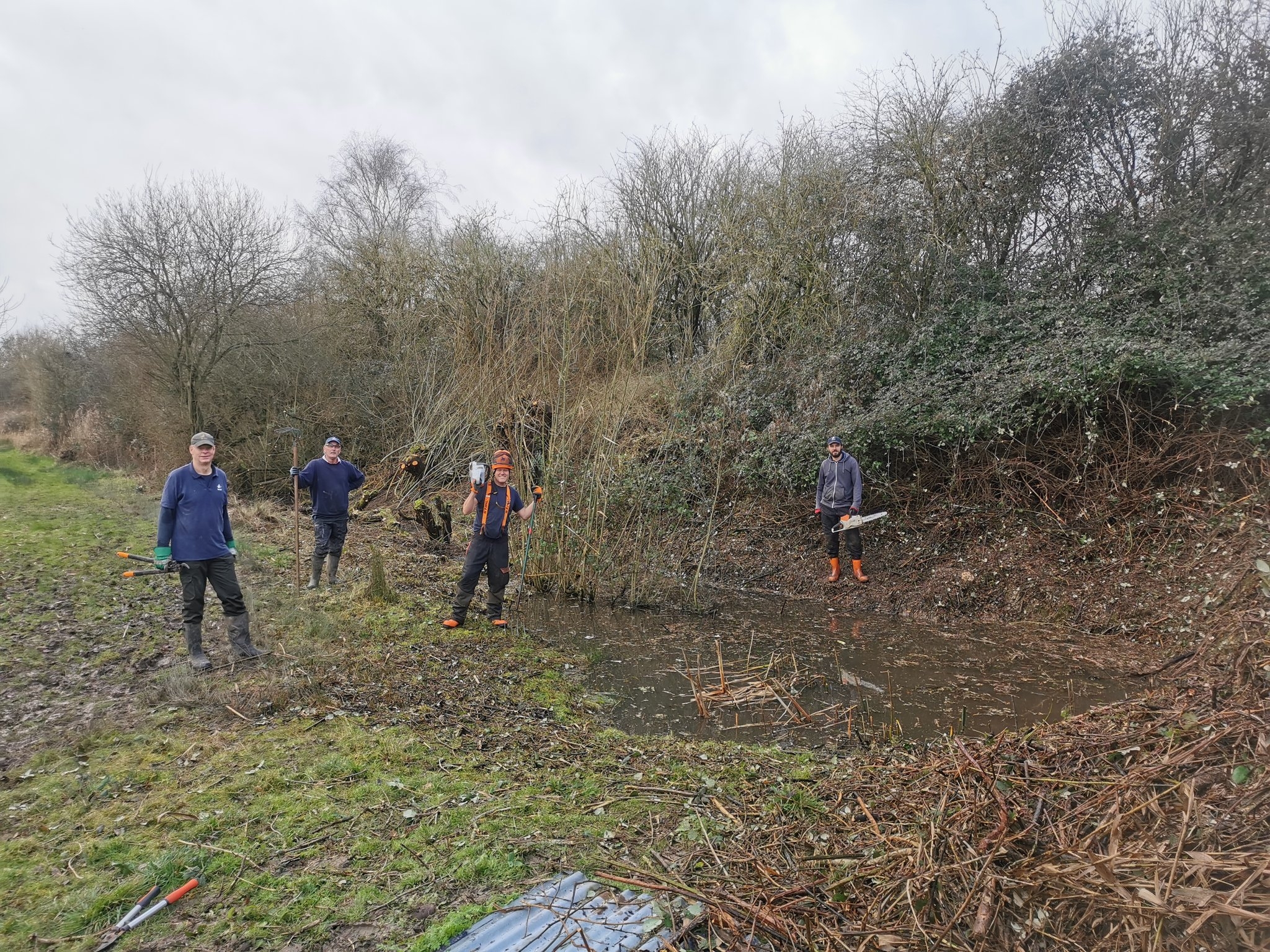
With much of the work finished in the south our attentions have now returned to the coppice woodland surround the Duck Decoy. Each winter we coppice sections of the woodland creating a mixed stand of ages of scrub across the area, with the thorn scrub particularly favoured by Bullfinch. Originally the coppice material would have been used to build and repair the catching pipes of the decoy itself, but today we maintain the coppicing regime to help keep the area open for duck to access the pond. This work generates a lot of brash material, which would usually be stacked in habitat piles but the area has become very congested so we took the decision to have a bonfire and remove the material and open up a marshy area between the House and North Pipes. With the trees cut back we should see a flush of other wetland plants make the most of the space, and a small pocked of Wild Currant which grows here should have a few good seasons too. We hope the area will be attractive to Teal as the winter finishes off, and as the spring arrives and the wetland plants grow up we should see warblers breeding here.
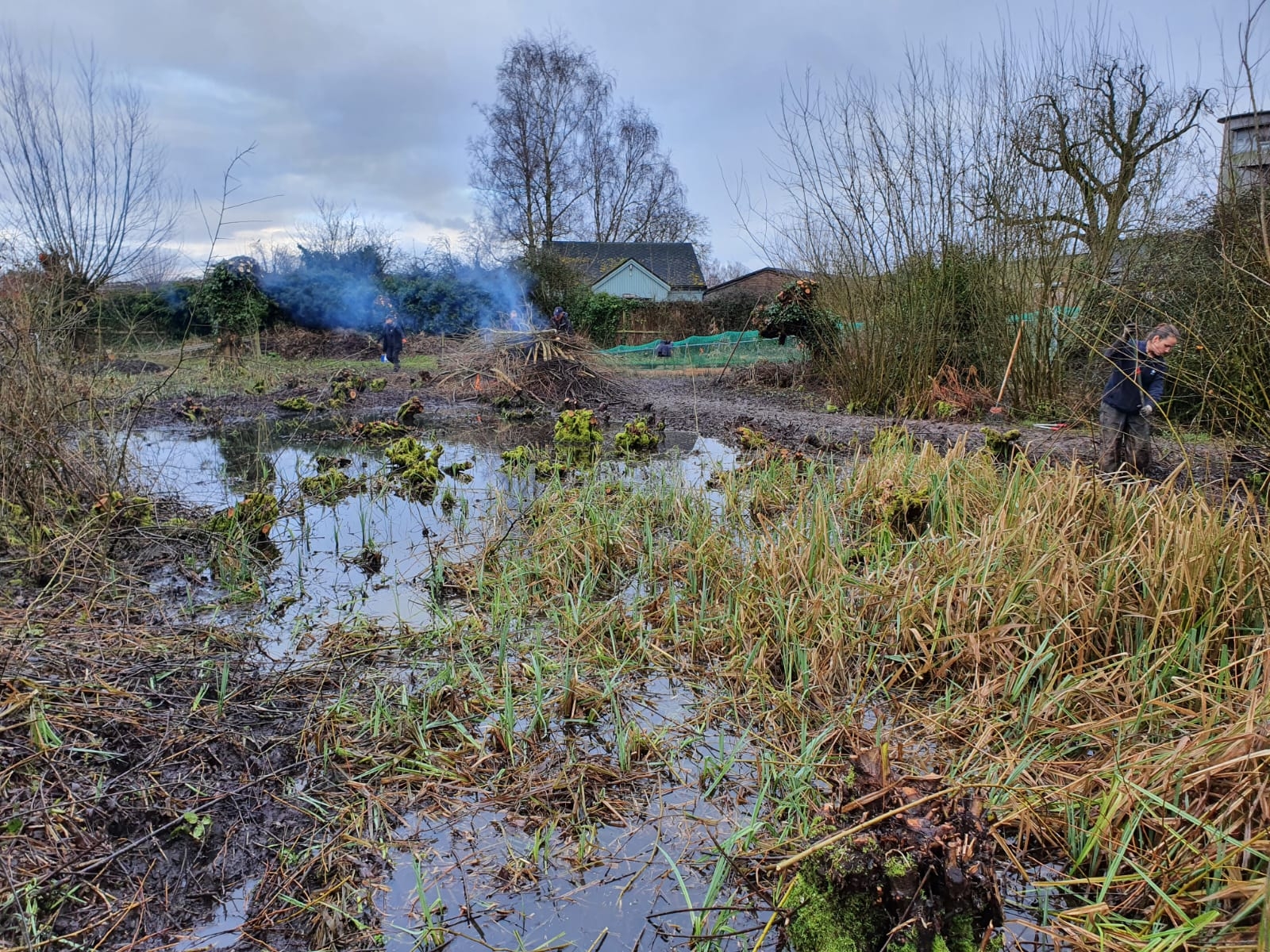
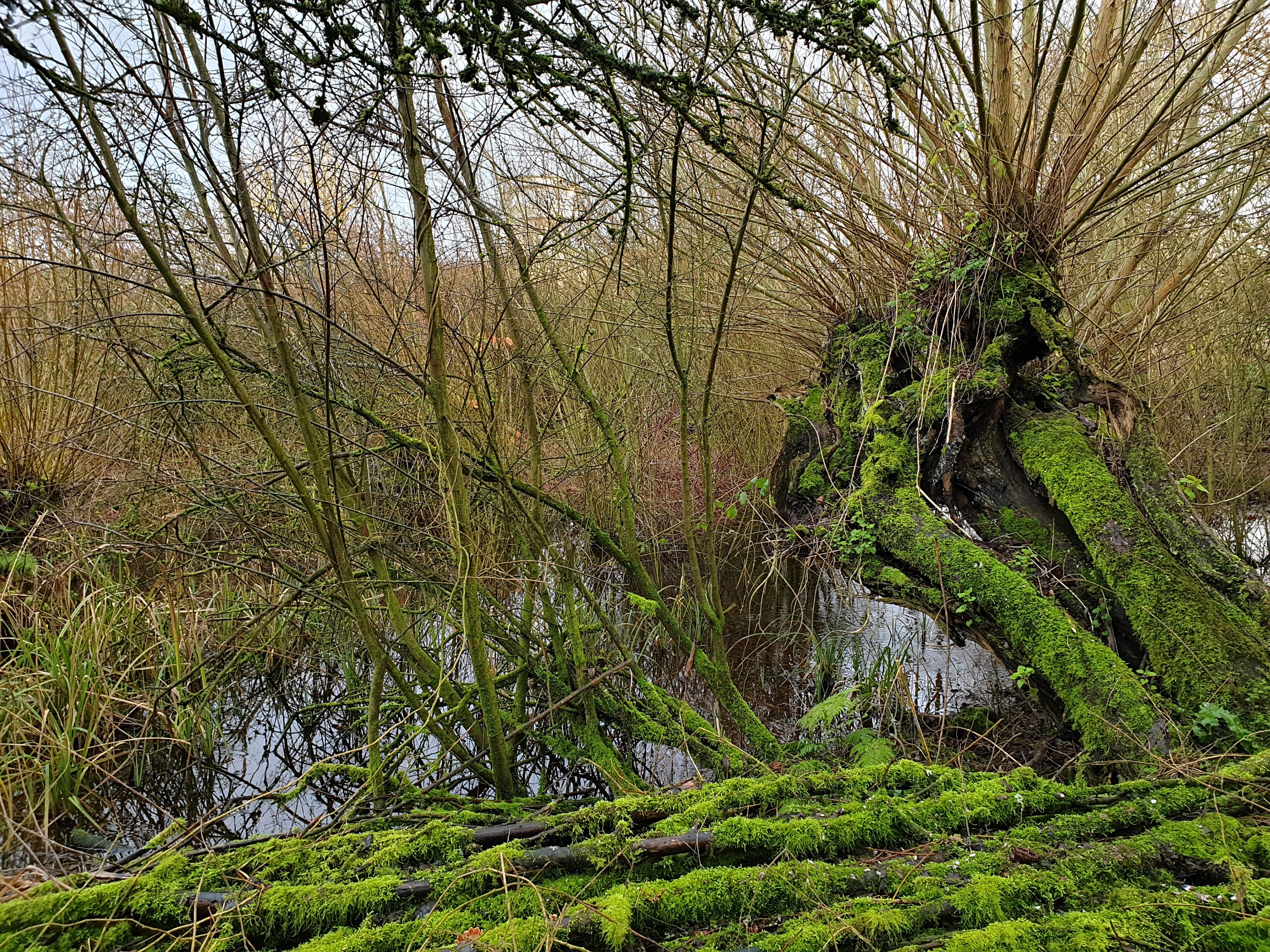
As for what our wildlife has been up to this week...
Wildfowl
Our Bewick's Swans are becoming restless and spending more and more time out on the Tack Piece. In the last couple of days some of the birds have not returned to the Rushy at all for any of the feeds, or too roost. We're in the final days now before they depart and our colleagues in Europe have also reported some movement of birds from the UK to Germany. Hopefully 'our' flock will remain with us for a few weeks yet to see out the cold weather that is coming.
The Cackling Goose was seen last weekend but has been elusive this week, as has the Dark-bellied Brent Goose. A Goldeneye was seen on Thursday - it flew around, circled part of the site and flew off past the Rushy back towards the canal.
The White-fronted Goose flock remains at 166 birds, with the Pink-footed Goose also still with them. They've spent this week grazing in the Four Score field next to the Kingfisher Hide.
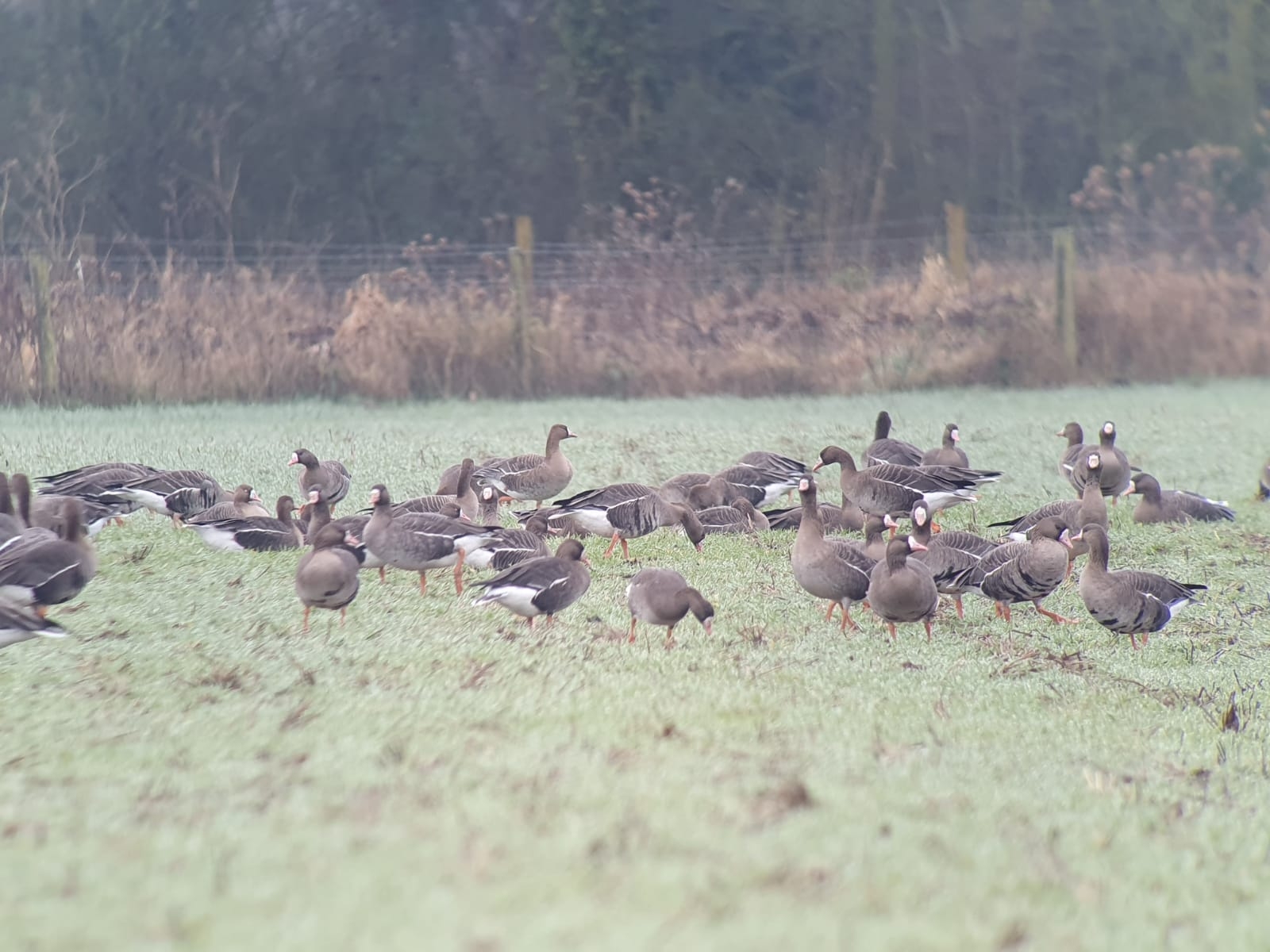
The recent combination of wet weather and mild weather has also seen our duck numbers drop off dramatically this week. On Tuesday over 100 Pintail were on floodwater upriver near Gloucester, and we've seen a corresponding drop of numbers on the reserve and estuary here. Our Wigeon numbers have also dropped and we're now below 1000 birds towards the end of this week. These species, along with Teal, will be spreading out locally and making use of floodwater and other wet areas that are now accessible due to the rain we've had. And then in the coming week we'll see them leave completely as they move off to their breeding grounds.
Some species do remain with us, and the spring should see Shelduck, Tufted Duck, Gadwall and possible a few Pochard staying to breed.
Waders
After the last short burst of freezing temperatures we lost our first returning Avocets as they had second thoughts, but by Wednesday this week two had returned and we now finish the working week with seven birds on the South Lake. Our Black-tailed Godwit flock number around 230 birds, with some showing the very first few breeding plumage feathers starting to moult through. This week we've also seen our Oystercatchers return in good numbers, and pairs are now arguing with each other and setting up teritories. Currently we have a pair on the Rushy, a pair on the Tack Piece, a pair on the Long Ground Pool and two pairs on the South Lake plus a single bird next to the Visitor Centre on the Big Pen. One or two pairs usually nest in the Living Collection exhibits, so we wait to see who else returns.
Despite all these birds returning and thinking about the breeding season, there is still a winter flavour to the skies above the reserve. As I write this I have the pleasure and priviledge of watching thousands of Golden Plover, Lapwing and Dunlin wheeling around over the Tack Piece - certainly an office with a view!
The wetter fields have also encouraged up to 300 Curlew to feed here too, and they also venture to the roadside fields at times. We're always on the lookout for colour-ringed birds of any species, but we pay close attention to the Curlew flock as we look for head-started birds from the WWT recovery project. These birds were bred in our captive breeding facilities at Slimbridge in 2019 and then released on to the Severn Estuary to help bolster the local breeding population. These birds should now be coming up to breeding age so we're keen to see who is back and what they're getting up to. Below is a photo of one of the regulars who has spent the winter here, a female, bird 40. Find out more about WWT's work with Curlew on our website here.
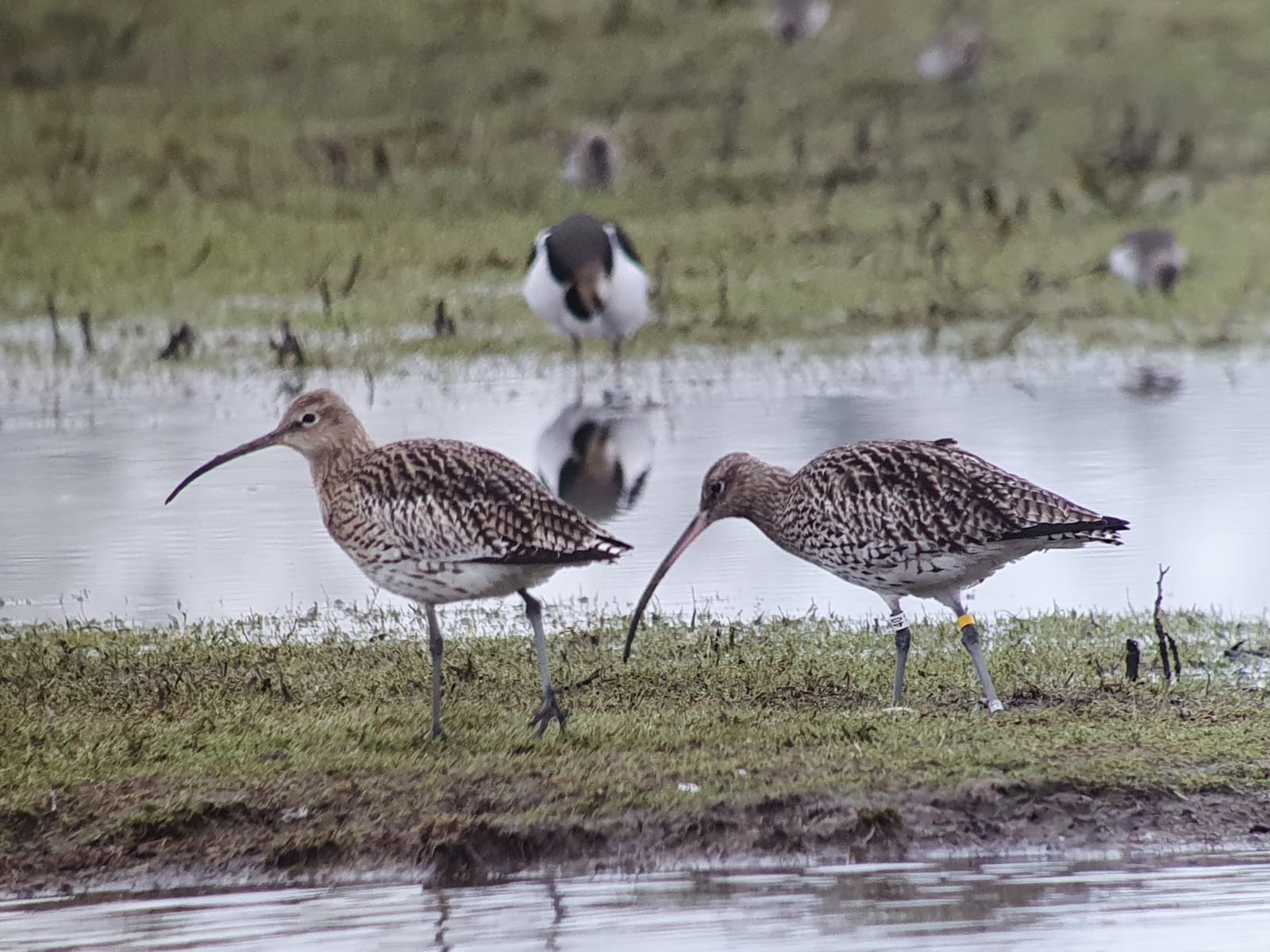
Other notable species
We're continuing to see egrets roosting on the reserve, with many of them then spending the day hunting in the ploughed field next to the Tudor Arms pub, just over the canal from the reserve. At least six Little Egret were here this morning with seven Grey Heron. Raptor sightings have been restricted to Buzzard, Sparrowhawk and Peregrine this week, the latter saw two females fighting over the Tack Piece mid-week.
Our Cranes are now once again being seen daily after a rather quiet winter period. Most days see pairs in flight across the north of the reserve. So far we have noted three pairs back including Oakie & Sherbert who usually breed in front of the Zeiss Hide, Kia & Chocolo who bred last year outside the Martin Smith Hide, Ruby and her unringed wild partner who claim the South Lake. Our singleton, Sedge, has also been seen. Two pairs who breed further up the north of the reserve are also likely to be back too, but with ground conidtions and winter birds we don't venture up here much so to prevent damaging the tracks and disturbing the birds. These two pairs are Wendy & Albert, and Phelps & Elizabeth Royal. We hope they will have a successful breeding season ahead, not least thanks to the new nesting islands we've created across the north of the reserve.
As spring continues to gather pace we're seeing lots of resident songbirds start to sing and claim territory, not least our Song Thrush and Mistle Thrush. Also amongst the growing chorus are Robin, Dunnock, Greenfinch, Blue Tit, Great Tit, Treecreeper and a few Cetti's Warblers are also becoming more vocal in the reedbeds and scrubby corners.
There is so much to come and we hope to be able to welcome you back to the reserve soon. For now, stay safe and if you're new to bird song why not try to learn a few of the commoner resident species who are singing now before the migrants arrive in the coming months. Good luck!

